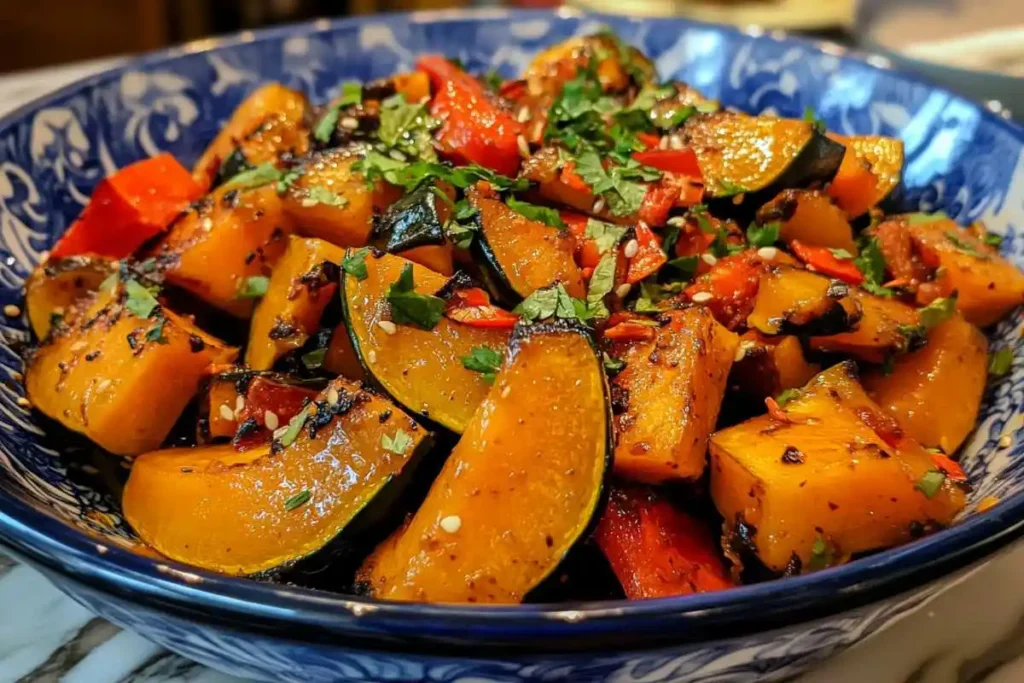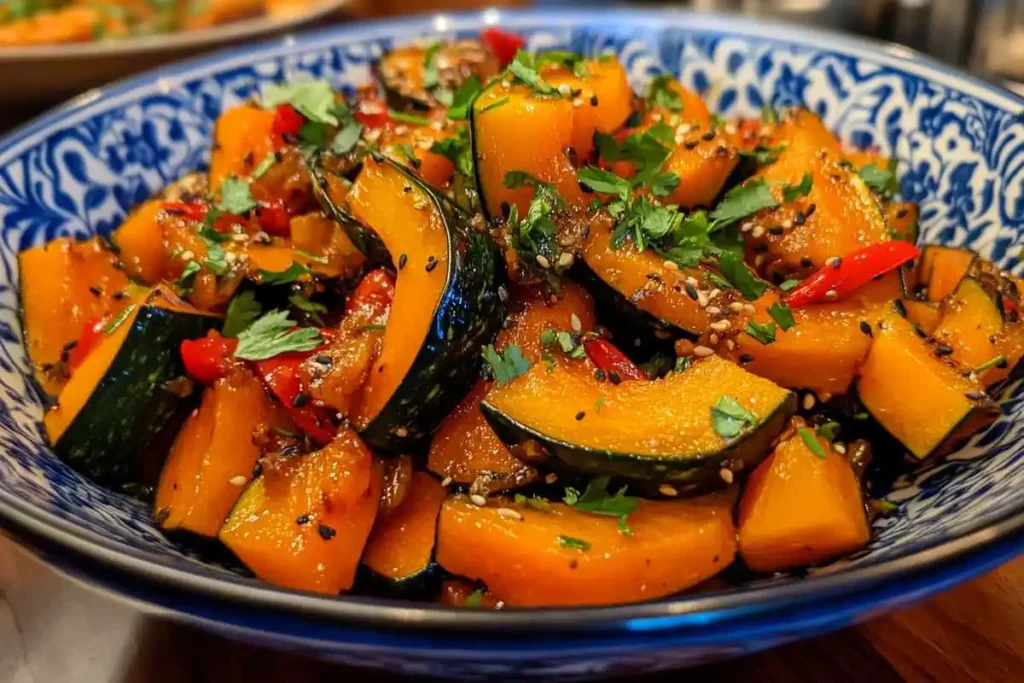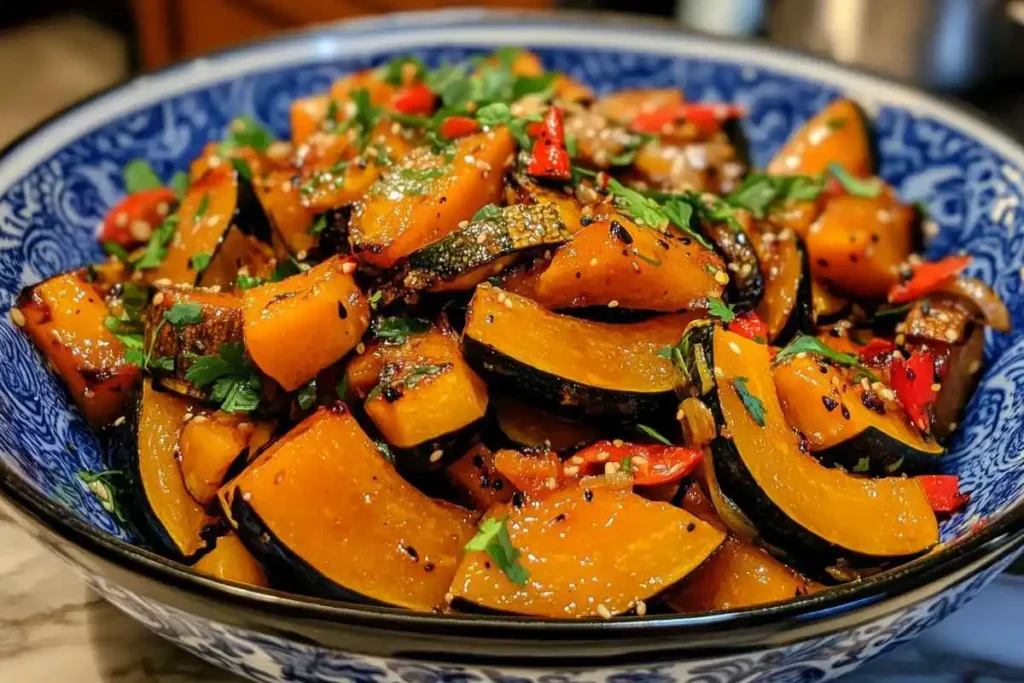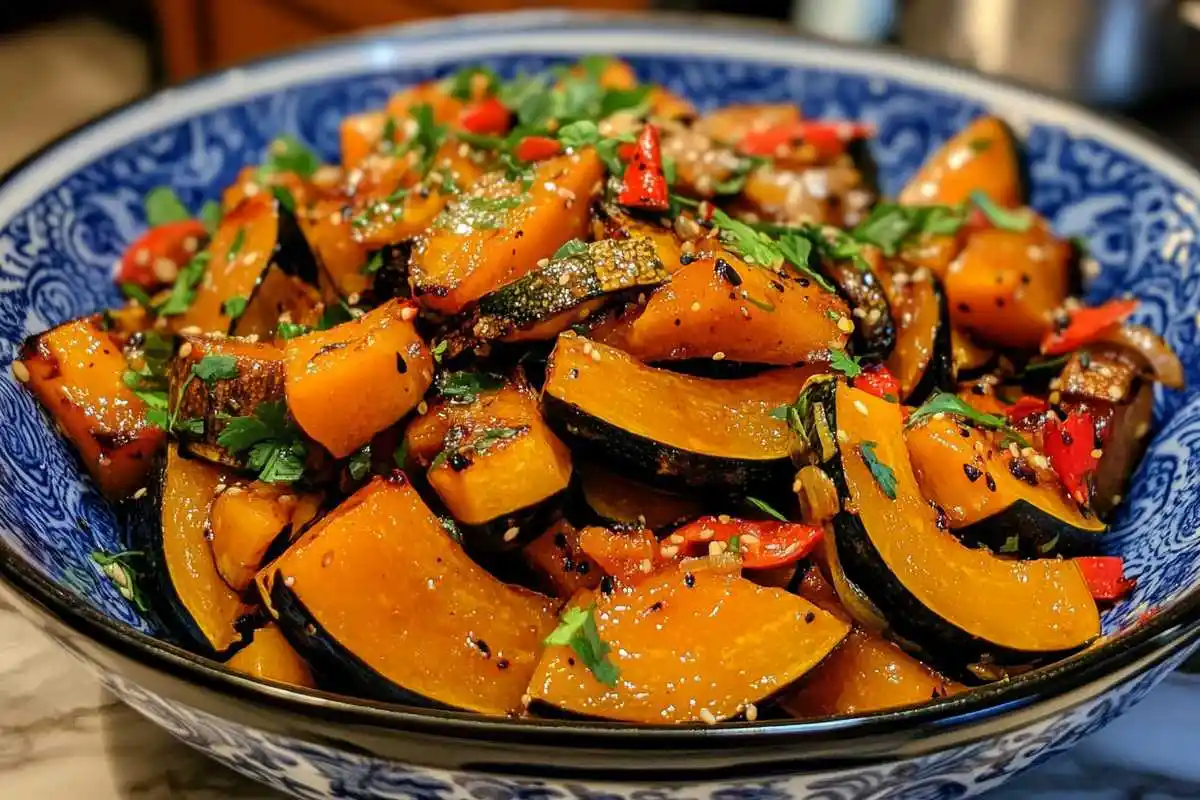Why You Should Eat the Skin of Kabocha Squash
Kabocha squash, often referred to as Japanese pumpkin, is celebrated for its sweet, nutty flavor and creamy texture. What many people don’t realize is that the skin of this versatile squash is just as edible and beneficial as its vibrant orange flesh. Choosing to eat the skin of kabocha squash not only boosts the nutritional value of your meals but also reduces food waste while adding a delightful texture to your dishes.
Nutritional Benefits of Eating Kabocha Squash Skin
Packed with Fiber and Nutrients
The skin of kabocha squash is a nutritional powerhouse:
- Rich in Fiber: Helps support digestion and maintain gut health.
- Loaded with Antioxidants: Contains vitamin A and beta-carotene, which are essential for healthy skin, vision, and immune function.
- Low in Calories: Offers a nutritious addition to your meals without adding unnecessary calories.
Eating the skin ensures you’re getting the maximum benefits from this winter squash. To explore other ways of enhancing the nutritional value of ingredients, visit Roasted Apricots Salad Recipes, which highlights how combining fresh produce elevates both flavor and health benefits.
Sustainability and Food Waste Reduction
Eating the skin of kabocha squash is also an environmentally friendly choice:
- Reduces Food Waste: By eating the entire squash, you minimize discarded parts.
- Maximizes Nutritional Intake: The skin contains unique nutrients that would otherwise be lost.
For similar tips on making the most of every part of your produce, check out Peeling Apricots Before Cooking, where the importance of preparation techniques is discussed.
Preparing Kabocha Squash Skin for Consumption
Cleaning the Skin
Before cooking kabocha squash with the skin on, it’s essential to clean it thoroughly:
- Rinse and Scrub: Use a vegetable brush under running water to remove any dirt or wax.
- Inspect for Damage: Trim off any blemishes or tough spots to ensure a clean, tender finish.
Cooking Techniques That Highlight Edible Skin
Certain cooking methods soften the skin, making it more palatable while retaining its nutritional benefits:
Roasting
Roasting is one of the best ways to cook kabocha squash with the skin intact. The high heat caramelizes the squash’s flesh and crisps the edges of the skin, creating a delicious contrast.
- Steps:
- Cut the squash into wedges or cubes.
- Toss with olive oil, salt, and your favorite spices.
- Roast at 400°F (200°C) for 25–30 minutes, flipping halfway through.
Roasted kabocha squash makes an excellent side dish or salad topping, similar to the flavors in Chinese Squash Recipes Kabocha Vegan, which incorporates bold seasonings.
Steaming
Steaming softens the skin while preserving the squash’s natural sweetness:
- Steps:
- Cut the squash into chunks.
- Steam for 15–20 minutes until tender.
- Add to soups, stews, or stir-fries.
Braising
Braising kabocha squash allows the skin to absorb flavors from the cooking liquid, making it tender and flavorful.
- Steps:
- Sauté garlic and ginger in a pot.
- Add sliced kabocha squash, soy sauce, and vegetable broth.
- Simmer until the squash is soft and the skin is infused with the rich sauce.
For inspiration, explore Garlic Parmesan Chicken and Potatoes, where similar braising techniques are used for maximum flavor.
Texture and Flavor of Kabocha Skin
When cooked, the skin of kabocha squash develops a tender texture that complements its creamy interior:
- Flavor: Adds an earthy, slightly nutty taste that enhances the overall dish.
- Texture: Provides a satisfying contrast to the soft flesh, especially in roasted or stir-fried recipes.
Embracing the Skin of Kabocha Squash
Choosing to eat the skin of kabocha squash is a small but impactful way to improve your meals and reduce waste. The combination of nutritional benefits, ease of preparation, and added flavor makes it an excellent choice for health-conscious cooks. In the next section, we’ll dive into specific recipes that showcase the versatility of kabocha squash skin in soups, salads, and stir-fries. Stay tuned for more ideas to transform your cooking!
Recipes and Techniques to Eat the Skin of Kabocha Squash
When you choose to eat the skin of kabocha squash, you’re not just making a nutritious choice but also unlocking a range of culinary possibilities. The skin’s texture and subtle flavor make it a perfect complement to the squash’s creamy flesh. In this section, we’ll explore various recipes and techniques to make the most of kabocha squash with its skin intact.
Delicious Recipes Featuring Kabocha Squash Skin

Roasted Kabocha Squash Wedges
Roasting is one of the simplest and most effective ways to enjoy kabocha squash with the skin. The high heat caramelizes the flesh and crisps the skin, creating a delightful side dish or snack.
Ingredients:
- 1 kabocha squash, washed and unpeeled
- 2 tablespoons olive oil
- 1 teaspoon garlic powder
- ½ teaspoon smoked paprika
- Salt and pepper to taste
Method:
- Prepare the Squash: Cut the kabocha squash into wedges, keeping the skin intact.
- Season: Toss the wedges with olive oil, garlic powder, smoked paprika, salt, and pepper.
- Roast: Spread the wedges on a baking sheet and roast at 400°F (200°C) for 25–30 minutes, flipping halfway through.
This recipe pairs well with bold, earthy dishes like those featured in Chinese Squash Recipes Kabocha Vegan, where roasted vegetables shine alongside flavorful seasonings.
Kabocha Squash Stir-Fry
Adding kabocha squash skin to stir-fries brings texture and flavor to your meals. The skin holds up well under heat, providing a satisfying bite.
Ingredients:
- 1 small kabocha squash, sliced thin with the skin on
- 1 block firm tofu, cubed
- 1 tablespoon sesame oil
- 2 cloves garlic, minced
- 1 tablespoon soy sauce
- 1 teaspoon grated ginger
- 1 teaspoon chili paste (optional)
- 1 cup chopped bok choy or spinach
Method:
- Steam the Squash: Steam the squash slices for 8–10 minutes until slightly tender.
- Cook the Tofu: Heat sesame oil in a wok, add tofu cubes, and cook until golden brown.
- Add Aromatics: Toss in garlic, ginger, and chili paste, cooking until fragrant.
- Stir-Fry the Vegetables: Add bok choy or spinach and steamed squash, stir-frying for 3–4 minutes.
- Season: Finish with soy sauce and serve over steamed rice.
For similar inspiration, refer to Garlic Parmesan Chicken and Potatoes, which uses layered flavors to elevate simple ingredients.
Kabocha Squash Soup with Skin
The skin of kabocha squash not only adds nutrients but also enhances the texture and depth of flavor in soups.
Ingredients:
- 1 medium kabocha squash, skin on, cubed
- 1 tablespoon olive oil
- 1 onion, chopped
- 2 garlic cloves, minced
- 4 cups vegetable broth
- 1 cup coconut milk
- Salt and pepper to taste
Method:
- Prepare the Squash: Wash and cube the squash, leaving the skin on.
- Sauté Aromatics: Heat olive oil in a pot and sauté onion and garlic until translucent.
- Simmer the Soup: Add squash cubes and vegetable broth. Simmer until the squash is tender, about 20 minutes.
- Blend: Use an immersion blender to purée the soup until smooth. Stir in coconut milk and season with salt and pepper.
- Serve: Garnish with toasted seeds or fresh herbs.
For additional tips on preparing produce for soups, explore Peeling Apricots Before Cooking, where the importance of preparation is emphasized.
Flavor Pairings to Enhance Kabocha Squash Skin

Herbs and Spices
- Cinnamon and Nutmeg: Perfect for roasted or baked kabocha dishes, enhancing the squash’s natural sweetness.
- Garlic and Ginger: Add depth and warmth, especially in stir-fries and soups.
- Rosemary and Thyme: Ideal for savory applications like roasted squash.
Complementary Ingredients
- Leafy Greens: Spinach, kale, or bok choy add freshness and balance.
- Whole Grains: Quinoa, farro, or rice provide a hearty base for kabocha dishes.
- Nuts and Seeds: Almonds, sesame seeds, or pumpkin seeds add crunch and flavor.
Cooking Techniques for Kabocha Squash Skin
Steaming
Steaming softens the skin without compromising its nutritional value. Use steamed kabocha in salads, curries, or as a base for creamy soups.
Grilling
Grilling kabocha slices with the skin adds a smoky flavor and crisp texture. Brush slices with olive oil, season with salt and pepper, and grill until charred.
Braising
Braising allows the skin to absorb rich flavors from broths and sauces, making it tender and flavorful. Combine kabocha squash with soy sauce, mirin, and sesame oil for a savory dish.
Why You Should Try Eating Kabocha Squash Skin
Choosing to eat the skin of kabocha squash not only maximizes its nutritional value but also opens up new culinary opportunities. The skin’s texture and subtle flavor enhance every dish, whether it’s roasted, stir-fried, or blended into a creamy soup. With simple preparation and cooking techniques, kabocha squash skin can transform your meals into nutrient-packed, sustainable delights. Stay tuned for the next section, where we’ll address common questions about kabocha squash and its skin!
Frequently Asked Questions About Eating the Skin of Kabocha Squash

The skin of kabocha squash is not only edible but also a source of nutrients and texture that can elevate your dishes. Here, we address the most common questions about choosing to eat the skin of kabocha squash, offering insights and practical tips to incorporate it into your meals.
FAQs: Common Concerns About Kabocha Squash Skin
Do I have to peel kabocha squash?
No, peeling is optional. The skin of kabocha squash softens during cooking and blends seamlessly with its flesh, making it ideal for most recipes. If you prefer smoother textures, you can peel only sections, leaving some skin intact for added nutrients.
For advice on optimizing preparation techniques, check out Peeling Apricots Before Cooking, which provides tips on managing produce textures.
Is kabocha rind edible?
Yes, the rind of kabocha squash is entirely edible and becomes tender when cooked. Its natural sweetness and earthy flavor complement a variety of cooking methods, from roasting to braising.
Key Tips:
- Roast wedges with the skin to create a caramelized, crispy exterior.
- Incorporate the skin into soups for extra fiber and a subtle nutty taste.
This technique is similar to ideas explored in Roasted Apricots Salad Recipes, where natural skins enhance flavor and texture.
Which squash skins are not edible?
While kabocha squash skin is safe and delicious to eat, not all squash skins are suitable for consumption. Here’s a comparison:
- Edible Skins: Kabocha, delicata, and acorn squash.
- Non-Edible Skins: Butternut and spaghetti squash, as their skins are too tough to soften adequately during cooking.
For more ideas on making the most of different squash varieties, see Chinese Squash Recipes Kabocha Vegan, which highlights the versatility of edible squash skins.
Can you eat the outside of kabocha squash?
Absolutely. The exterior of kabocha squash is entirely edible once cleaned thoroughly. The skin adds texture, holds the flesh together during cooking, and enhances the overall eating experience.
Preparation Tips:
- Scrub the skin under running water to remove dirt or residue.
- For grilling or roasting, slice the squash into manageable pieces to ensure even cooking.
Health and Environmental Benefits of Eating Kabocha Skin
Health Advantages
- Boosts Fiber Intake: The skin is rich in dietary fiber, which aids digestion and promotes gut health.
- Preserves Nutrients: The skin contains antioxidants, vitamins A and C, and trace minerals that support immunity and overall health.
Environmental Impact
Eating the skin of kabocha squash also contributes to sustainable cooking practices:
- Reduces Food Waste: By consuming the entire squash, you minimize kitchen waste.
- Maximizes Resources: Incorporating the skin ensures you’re making full use of the produce you buy.
These principles align with the eco-friendly practices highlighted in Flavors That Complement Apricots, where whole ingredients are celebrated.
Cooking Methods That Highlight Kabocha Skin
Roasting with Skin On
Roasting kabocha with its skin enhances its flavor while creating a delightful contrast between the crispy exterior and creamy interior.
Steps:
- Slice the squash into wedges, season with olive oil and spices, and roast at 400°F (200°C) for 25–30 minutes.
Braising for Tender Skin
Braising softens the skin, allowing it to absorb the rich flavors of broths or sauces.
Steps:
- Simmer kabocha cubes in a mixture of soy sauce, ginger, and vegetable broth for a savory side dish.
Steaming for Soft Texture
Steaming retains the squash’s natural sweetness and ensures the skin becomes tender without losing nutrients.
Steps:
- Cut the squash into chunks, place them in a steamer basket, and cook for 15–20 minutes.
Embrace the Benefits of Eating Kabocha Skin
Choosing to eat the skin of kabocha squash is a simple yet impactful way to enhance your meals. Whether you’re roasting, steaming, or braising, incorporating the skin adds texture, flavor, and nutrients while reducing waste. With its versatility and health benefits, kabocha squash and its skin are valuable ingredients for any kitchen. Start experimenting with these tips and recipes to unlock the full potential of this incredible winter squash!

